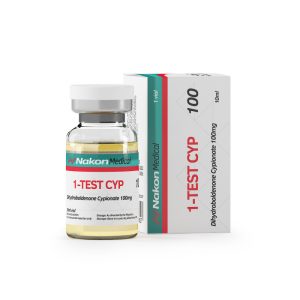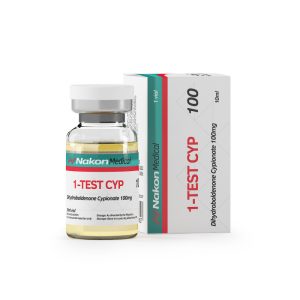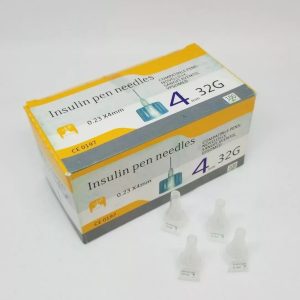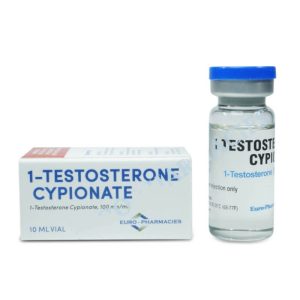How to properly mix, dose, and store peptides
Storing Your Peptides
Storing your peptides correctly whether they are reconstituted or not is pivotal in how they perform. A big difference is in the temperature of when they are reconstituted versus when they are still in lyophilized form.
Typically, when in lyophilized form or reconstituted form the rule of thumb is to maintain a temperature between 36 and 46 degrees Fahrenheit. For those of you that use Celsius that would mean about 2 degrees to 8 degrees. In many cases, this would mean storing it in your freezer which is a perfectly viable option.
Peptide Reconstitution
Proper reconstitution and maintenance of your peptides are pivotal in how well they work for you. If not stored or reconstituted correctly, you risk damage to or degradation of your peptides. But why do you need to reconstitute your peptides in the first place?
These substances mainly come as a compound that has been lyophilized. This phrase basically means that they have been turned into a freeze-dried crystalline powder. In order to use your peptides, you’ll need to add fluid to them. This is where the phrase reconstitution is coined.
However, you cannot add just any old fluid to your compound, and it cannot be done in a listless manner. Great care needs to be taken to ensure that your peptide is not damaged during this process.
How to Reconstitute Peptides
For starters, you’ll need the following supplies for proper peptide reconstitution:
- An Alcohol Wipe
- A syringe
- Your Lyophilized Peptide
- Bacteriostatic Water or Sterile Water
To begin the peptide reconstitution process, you’ll want to wipe down the top of your vials as a safety precaution with the alcohol wipe. Then you’ll want to use your syringe and pull either your bacteriostatic or sterile water from that vial. Keep in mind you don’t want to touch the needle as this part of the syringe has been sterilized. Therefore, touching it would then cause contamination.
For the sake of this example, we’ll say that you pull 1ml. Keep in mind, different doses need different amounts of liquid when reconstituting. This will be explained further in the dosing section of this article.
From here, you’ll want to inject your syringe directly into the lyophilized peptide vial. Do not, I repeat, DO NOT just shoot the water into the vial. This will damage the peptide and render it useless.
Rather than spraying your peptide, the goal here is to drip the liquid down the side of the vial. Doing so will begin the process of reconstitution without destroying your product. Once you inject either your bacteriostatic water solution or sterile water into your peptide vial, you can remove the syringe from the vial. Some individuals may say you need to lightly swirl the solution in the vial. However, 9 times out of 10 this is unnecessary and can do more harm than good. You’ll basically want to let it dissolve on its own.
Bacteriostatic Water Vs. Sterile Water
During peptide reconstitution, two variations of solutions are popular. These two solutions are sterile water and bacteriostatic water. The choice is purely up to the user which solution to use. However, there are some differences between the two.
Differences Between Bacteriostatic Water vs. Sterile Water
For bacteriostatic water, for instance, it is not like the sterile water in that it can be used several times within a 28-hour span. In fact, because of this reason, bacteriostatic water is fairly popular among scientists. It is considered a non-pyrogenic solution, meaning that it does not conduct heat or fever when introduced to the body. It contains roughly 0.9% benzyl alcohol. This variation of alcohol is an aromatic alcohol. In terms of chemistry, they are a compound that contains a hydroxyl group that is indirectly bonded to an aromatic compound. This gives it a pleasant smell. All of this basically comes down to is that the liquid is made in a way where bacteria cannot grow. That’s what makes it more user friendly since it can be used multiple times.
As for regular sterile water, it too has its own positives. It too is a nonpyrogenic liquid. However, unlike the bacteriostatic water, the sterile water can only be used once and once opened and used would need to be discarded. In many cases, when the body doesn’t particularly fair well with bacteriostatic water, this is a good substitute.
Peptide Dosages
For the purpose of explaining how exactly we get the correct dosage for each peptide, we’ll say we want to go with a treatment regimen of PT 141 also know as Bremelanotide. Now, for PT 141, the vials come as 10mg vials. As mentioned in this article, the proper dosage is 1.75mg per 8 doses a month. This means that we not only need to know how to properly reconstitute a peptide, we also need to know how much of the reconstituted peptide we need to pull into the syringe to administer.
For starters, one insulin syringe is exactly 1mL of fluid. The measurements on the side of the syringe go up by 10s with each tick mark in between being 2 units each. Now, I mentioned that the vials come as 10mg vials. Say you add 1mL of bacteriostatic water to this compound following the instructions above. You now have one mL of bacteriostatic water and 10mg of peptide combined to create your reconstituted peptide. Now what?
Conversions When Dosing Peptides
Well, now we need to understand how much we need to pull into our syringe to get the correct dose each time we use the peptide. How do we do this? Well, there is a little understanding of the old school conversions that need to take place. To start, every 1mg converts to 1000mcg. This would mean that in 1.75mg there is 1750mcg. Now, looking at your syringe, every tick mark converts to being 200mcg. Therefore, in order to get the correct dose of PT 141, you would need to pull up to 9 tick marks of fluid into your vial. This translates into 1800mcg which in turn would mean 1.80mg.
No, this is not right on the money at 1.75mg but you are right there. Now, if you’d rather be safe and stay under, you’d only need to figure out the next closest dose which on the syringe would end up being 1600mcg or 1.60mg.
Now let’s say you want to do the opposite and up your dose to 2mg per dose. This would then convert to 2000mcg. Again, each tick mark is 200mcg so this would mean that you would need to pull in 10 tick marks. On the syringe, this coincides with the 20 units mark.
Let’s say you end up putting 2mL of bacteriostatic water instead of the 1mL. This effectively makes each tick worth 100mcg. So now if you still want your 2mg of peptide, you’ll have to pull up to the twentieth tick mark which then coincides with the 40 units mark instead of the 20 unit mark.
So, in reality, it will depend on both the number of peptides you have in mg as well as the amount of bacteriostatic or sterile water you put in your peptide vial.
So now say we have a peptide that has 5mg of product in the vial and you reconstitute it with 1mL of bacteriostatic water. This ends up being the same as having 10mg of product and 2mL of bacteriostatic water. In that in order to get your 2mg dose, you’ll need to hit that 40 units tick mark because each tick is worth 100mcg.
This all of course means next to nothing if you’re either not knowledgeable or afraid to perform your own subcutaneous injection. This next section works to aid in your confidence and gives you the main guidelines on how to perform this type of injection correctly.
How To Properly Perform A Subcutaneous Injection
Before we begin, let’s answer this question: What is a subcutaneous injection? A subcutaneous injection is a shot that is given under the skin but doesn’t pierce the muscle. Typically, this method is used in the medical field as a way of giving small amounts of medications.
There are two ways to administer a subcutaneous injection. You can either inject your peptide at a complete 90-degree angle or at a 45-degree angle. How do you know which angle to use? It’s simple. When you pinch the skin in between your fingers and can grab 2 inches then a 90-degree angle is the viable option. However, if you can only grasp about an inch of skin the 45-degree angle is recommended.
Types of Needles Used for Subcutaneous Injections
There are two variations of needles that are commonly used to administer subcutaneous injections. The first is an insulin syringe. This type of syringe holds 1mL of your compound and usually has markings from 10 to 100. That would mean if you’re supposed to take a 0.5mL dose you’d only fill the syringe to the 50 mark.
The second most common syringe is the tuberculin syringe. It has a needle that is slightly longer than an insulin syringe and is marked every 0.1mL. It too holds 1mL of the compound.
The Subcutaneous Injection Process
What You’ll Need for Injections:
- A Sterile Syringe
- An Alcohol Wipe
- Your Reconstituted Peptide
- Disposable Gloves (optional)
After deciding which syringe you’re comfortable with you to have to choose what location to administer the injection too. There are four common areas when deciding where to inject. These areas include the abdomen, the thigh, the lower back, or the upper arm. Again, keep in mind this is not like a flu shot. The goal is not to inject your peptide into the muscle. It is to simply inject into the area just under the skin.
Once your injection site is decided upon, this would be the point in which you would apply your disposable gloves. If you decide not to use disposable gloves this is okay as well. Just keep in mind you’ll want to handle everything with freshly washed hands.
Start by using your sterile wipe to wipe down the area you plan to inject your peptide into and let it air dry. For this example, we’ll say you’ve chosen your abdomen. Once your abdomen is dry, you can move onto the next step. Which is the preparation of your needle.
The most recommended way to prepare your needle is to take the syringe in your dominant hand, so your writing hand. You’ll then pull the cover off with the other hand. Once this is completed you’ll then pull the correct amount of peptide into your syringe from your vial.
Something to keep in mind is that if you are using insulin syringe size needles, it is virtually impossible to properly clean them. Because of this, a one-time use and disposal needle is recommended.
After you pull your desired amount of peptide into your vial, you’ll want to pinch the skin where you are injecting it in between your thumb and first finger. Again, if you are able to pull about two inches of skin up then a 90-degree angle of injection is okay. However, if you are only at about an inch then you’ll want to go with a 45-degree angle.
At this point, you’ll want to inject the needle completely into the skin avoiding muscle tissue. This is where you’ll push the plunger in which will then administer your choice of peptide into your abdomen. Once you completely empty the syringe you can pull the needle out. A good thing to keep in mind while injecting is to hold the syringe barrel relatively tight and to use your wrist to do most of the injecting.
Showing 1–12 of 5848 results
-
1 Test Cyp 100mg/ml – Nakon Medical Nakon Medical
-
1 Testosterone Cypionate Euro Pharmacies
-
1- Test C / Dhb Mactropin
-
1-Test Cyp 100 Dragon Pharma
-
1-Test Cyp 100 Nakon Medical
-
1-Testosterone Cypionate (DHB) 10ml Euro-Pharmacies
-
1-Testosterone Cypionate DHB 75mg/ml, 15ml/vial USA Euro-Pharmacies
-
1-Testosterone Cypionate Euro-Pharmacies
-
1-TESTOSTERONE CYPIONATE NORDIC FUSION
-
10 amp-1-Testosterone Cypionate (DHB) – 100mg/ml 1ml-amp EU Euro-Pharmacies
-
10 amp-1-Testosterone Cypionate (DHB) – 100mg/ml 1ml-amp EU Pharmaceutical
-
10 amp-Boldenone Undecylenate (Boldenone) – 250mg-ml 1ml-amp EU Euro-Pharmacies





